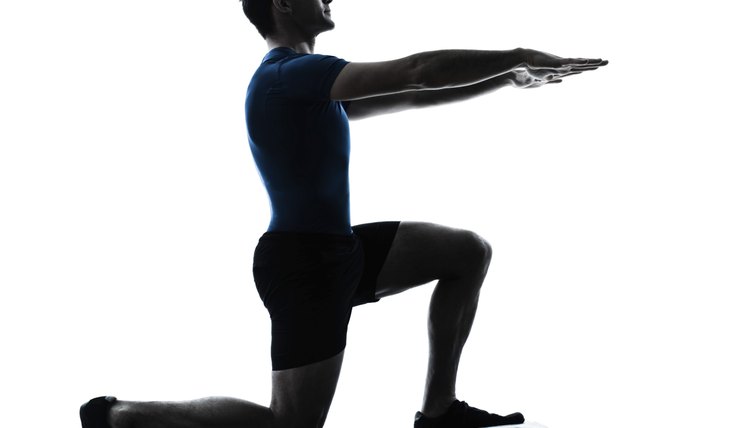How to Inflate the BOSU Balance Trainer

BOSU is an acronym that stands for "both sides up." The BOSU ball has a flat, circular base with an inflatable dome. Use the BOSU with the dome side up or down to do a variety of strength, agility, balance and aerobic exercises. After buying your BOSU ball, you have to inflate the dome. Most BOSU packages include a hand pump, but you can use any bicycle or air pump. You need a standard air pump nozzle -- not an air pump needle, which is too small for the BOSU inflation hole.
Set the BOSU ball on a level surface with the flat side facing up.
Locate the white plug in the center of the base. Pull the plug out of the ball.
Insert the air pump nozzle into the inflation hole and inflate the BOSU ball with the air pump.
Continue inflating the ball until it's nine to 10 inches above the floor.
Pull the air pump nozzle out of the inflation hole and quickly reinsert the plug.
Warnings
Don't put so little air in the ball that you bottom out when you stand on the air dome.
References
- BOSU: What is BOSU®?
- Wing CH. The BOSU Ball: Overview and Opportunities. ACSMs Health Fit J. 2014;18(4):5-7 doi:10.1249/FIT.0000000000000048
- American Council on Exercise. BOSU Squat Jumps.
- Fable S. American Council on Exercise. Complete Core BOSU® Workout. 2014.
- Costello MC, Bloesch EK. Are Older Adults Less Embodied? A Review of Age Effects through the Lens of Embodied Cognition. Front Psychol. 2017;8:267. doi:10.3389/fpsyg.2017.00267
- Proske U, Gandevia SC. The Proprioceptive Senses: Their Roles in Signaling Body Shape, Body Position and Movement, and Muscle Force. Physiol Rev. 2012;92(4):1651-1697. doi:10.1152/physrev.00048.2011
Writer Bio
Based in Austin, Texas, Jolie Johnson has been in the fitness industry for over 12 years and has been writing fitness-related articles since 2008 for various websites. She received her Bachelor of Arts in English and philosophy from the University of Illinois.
